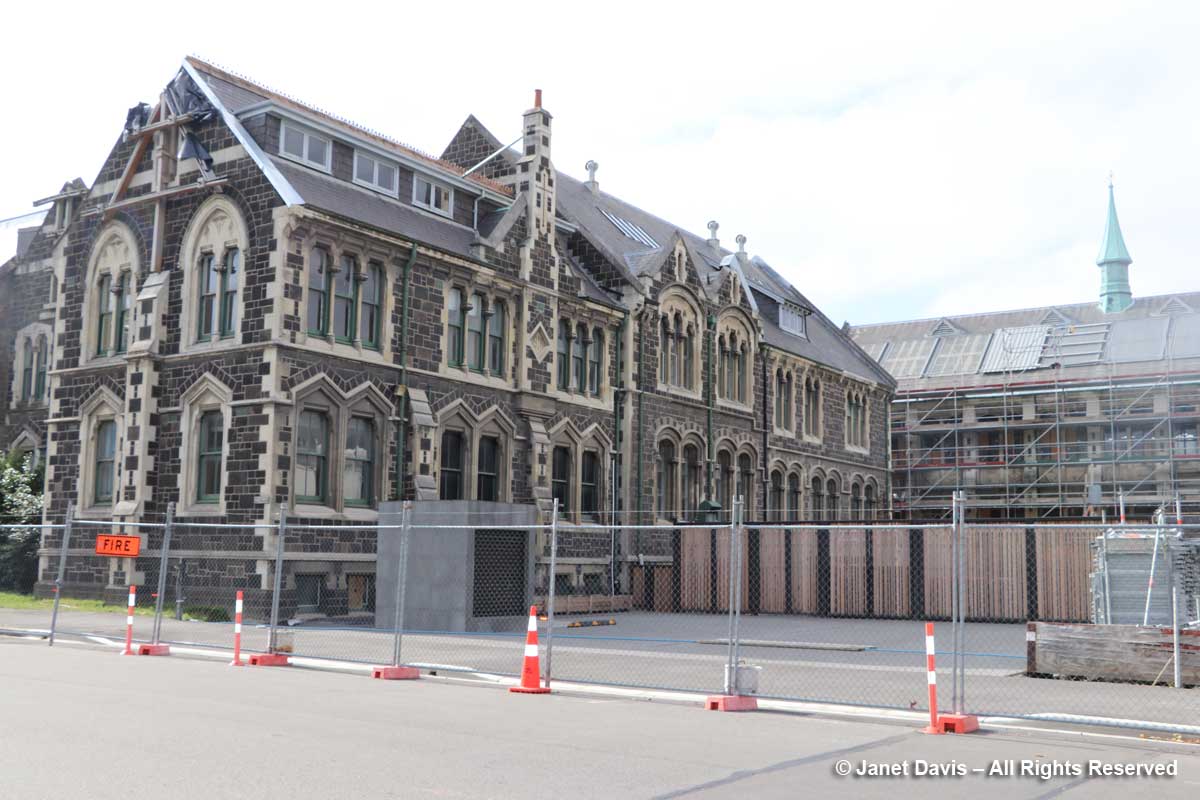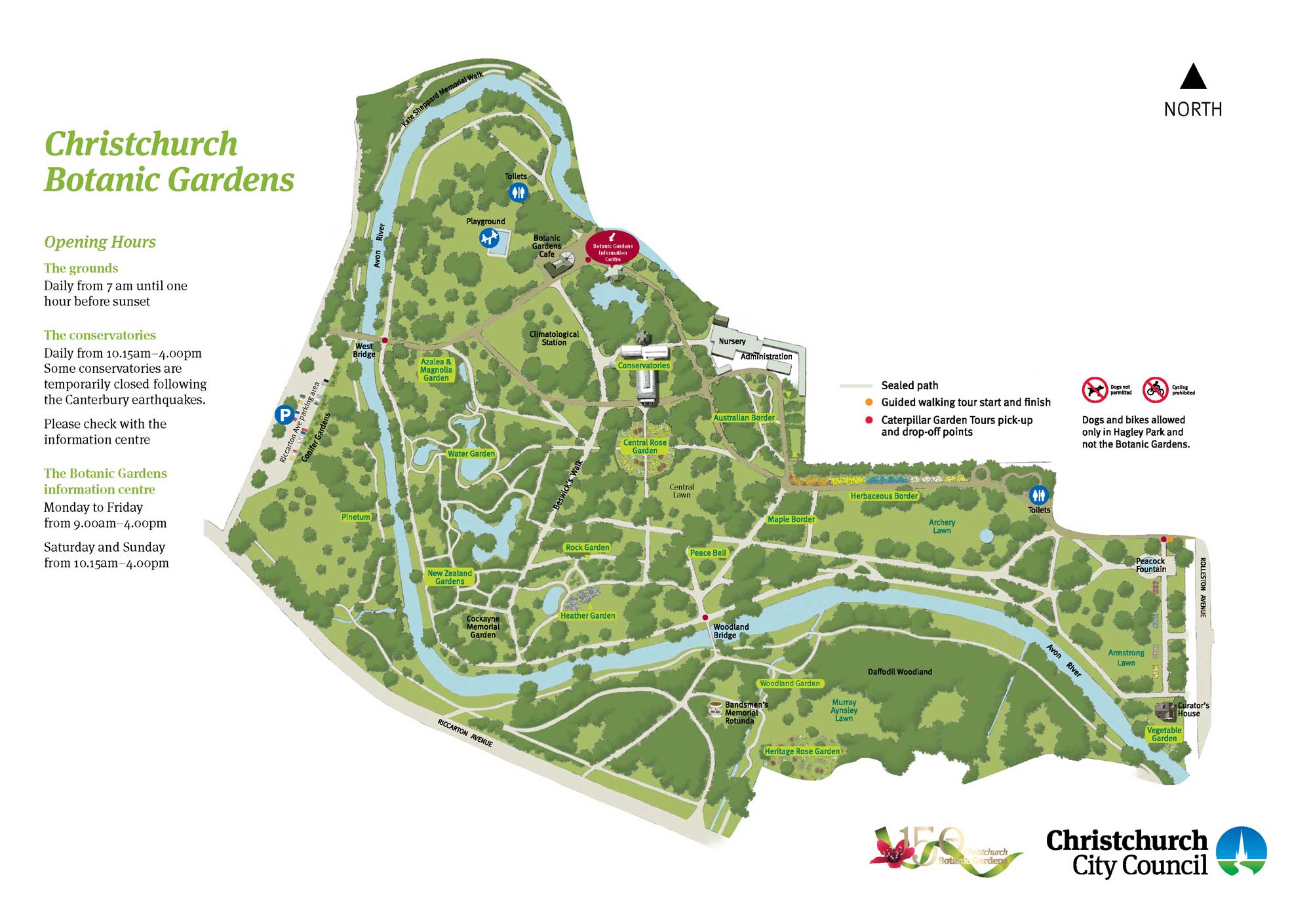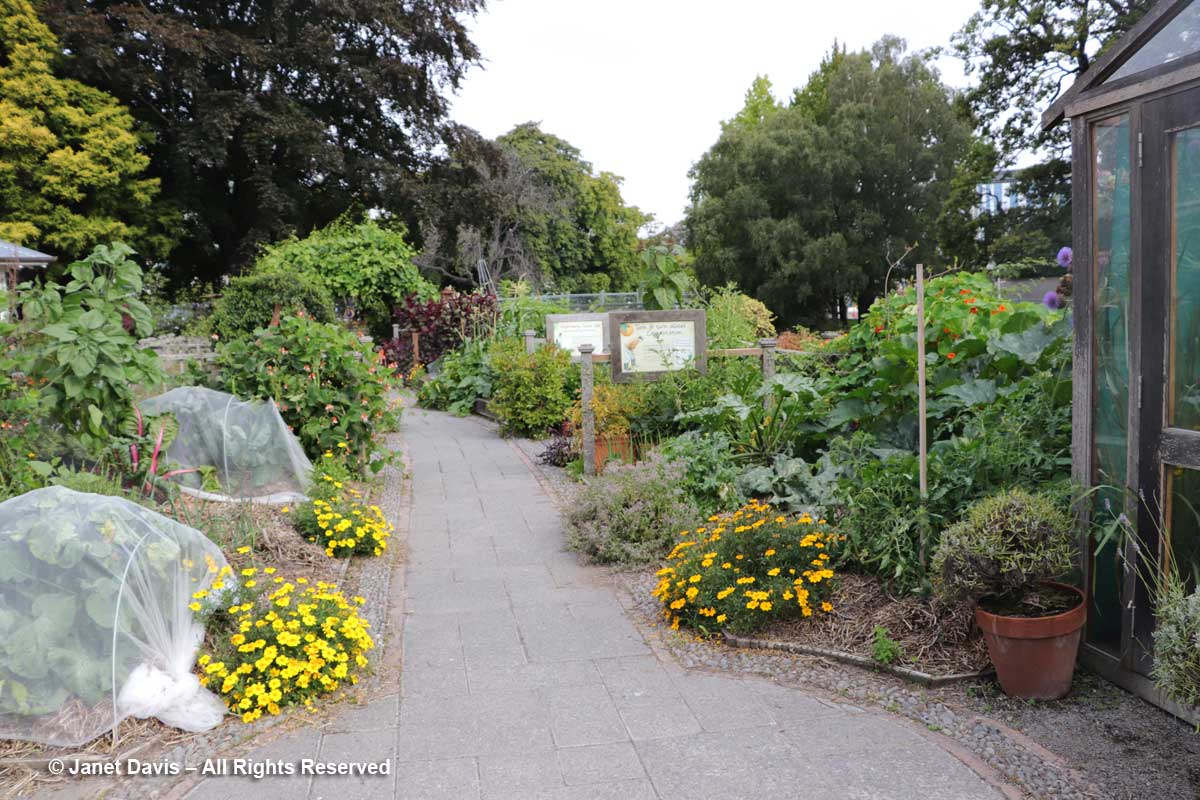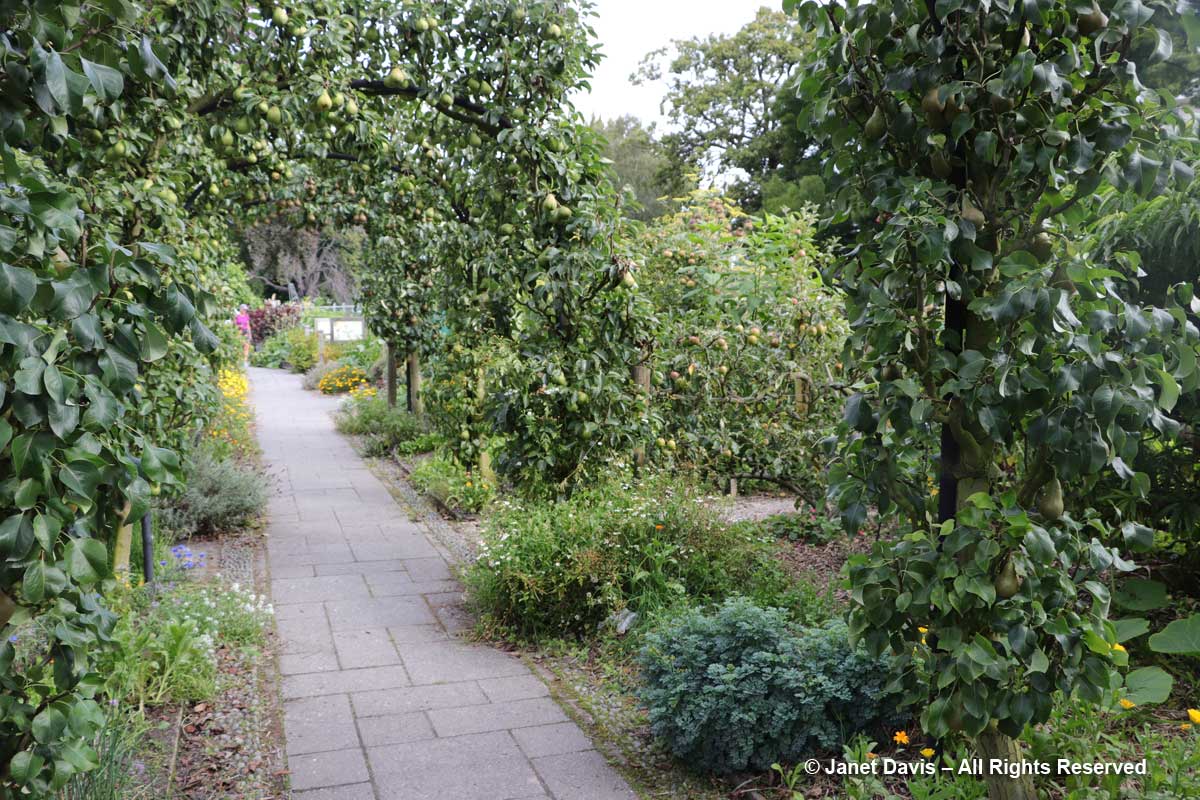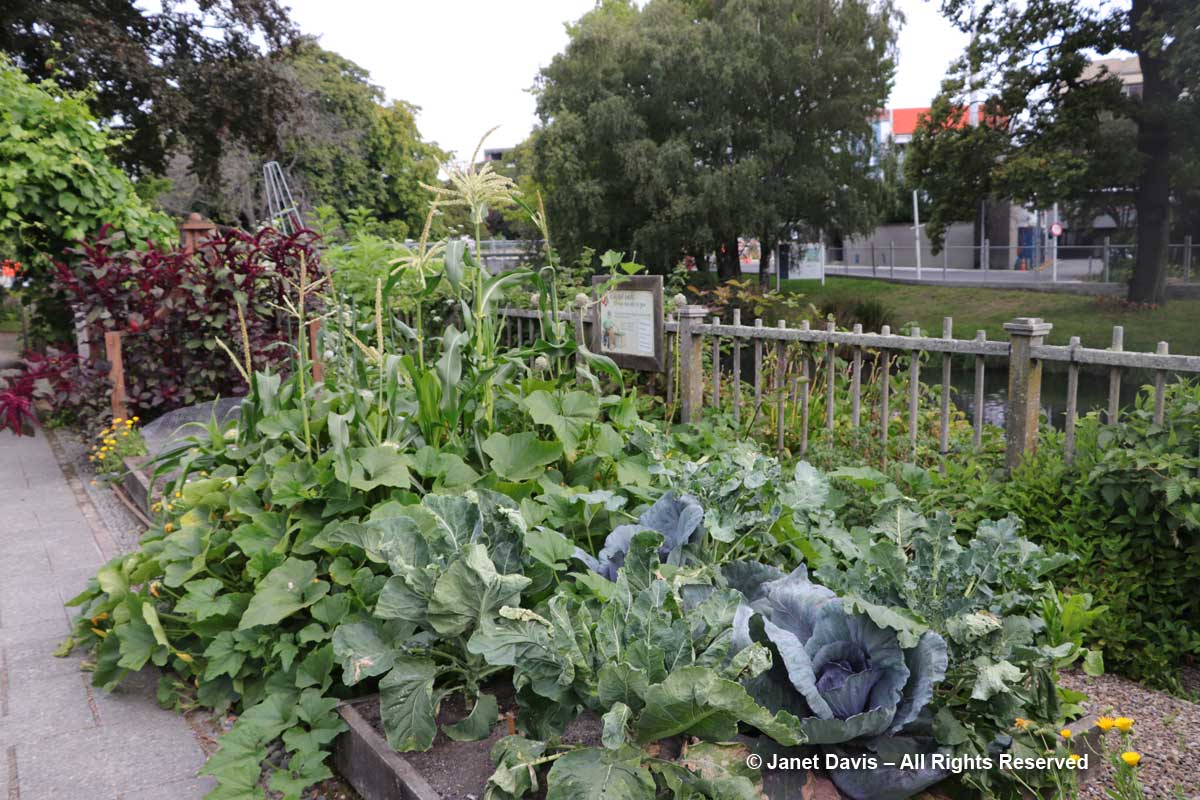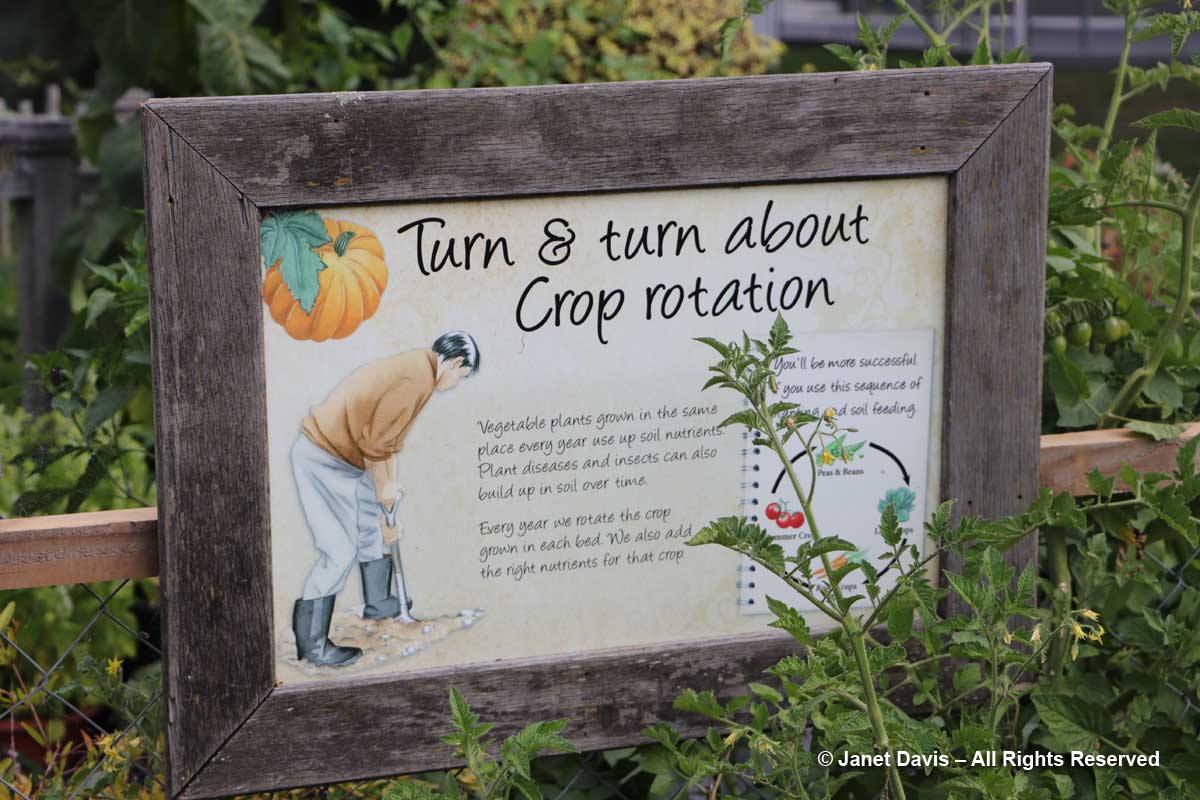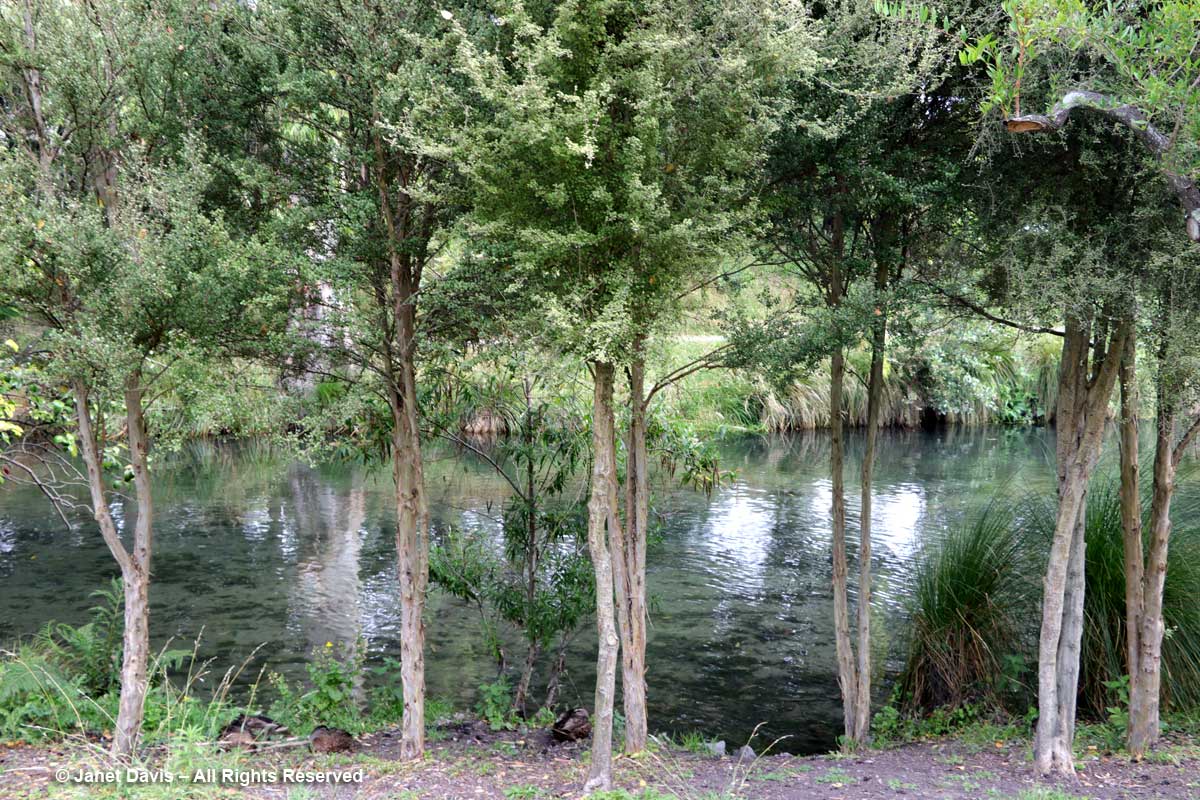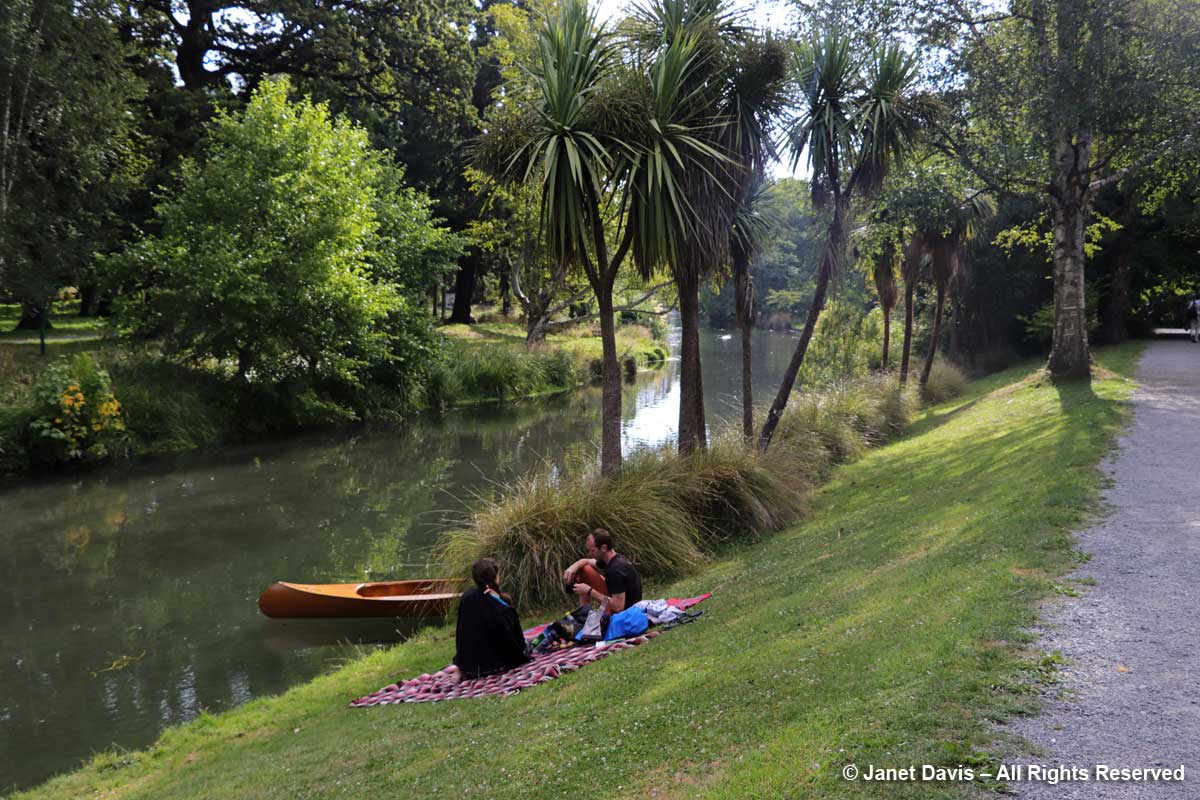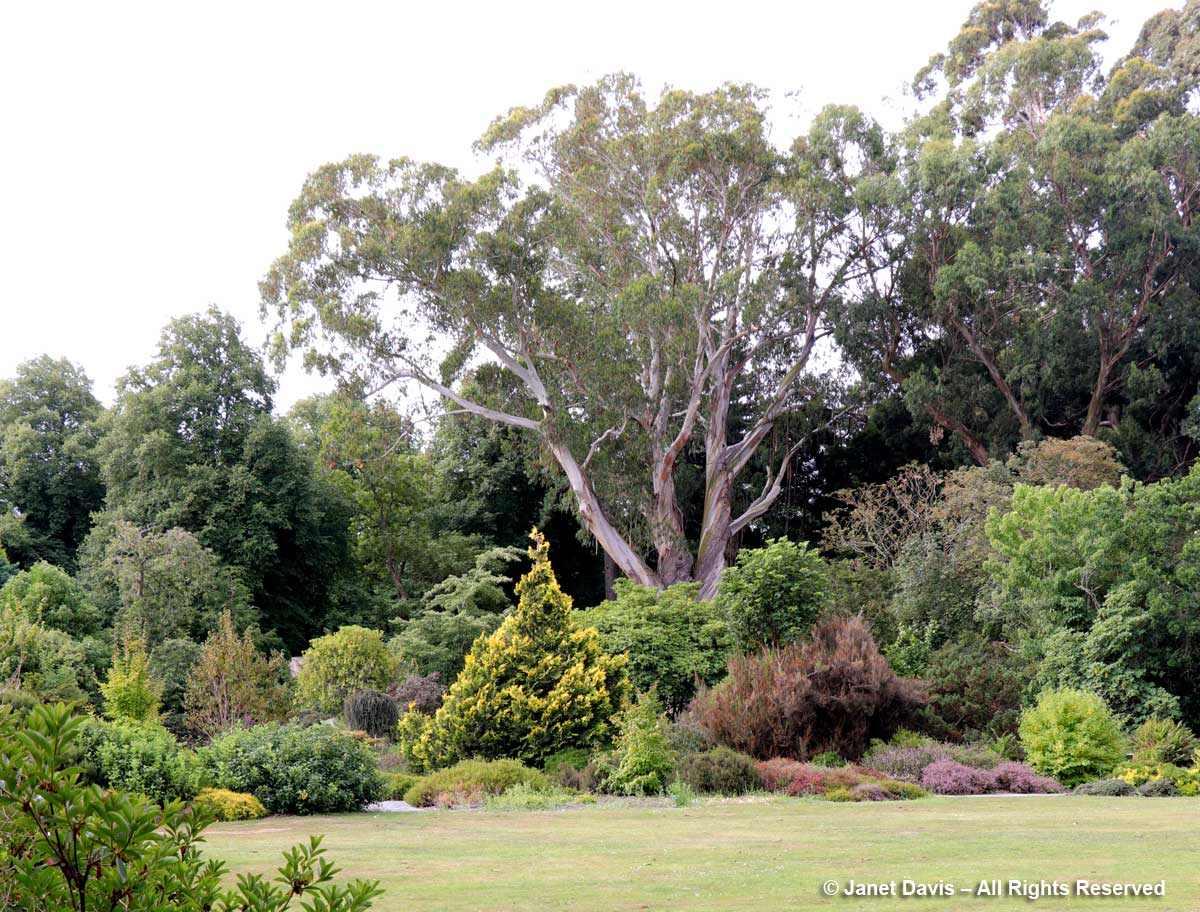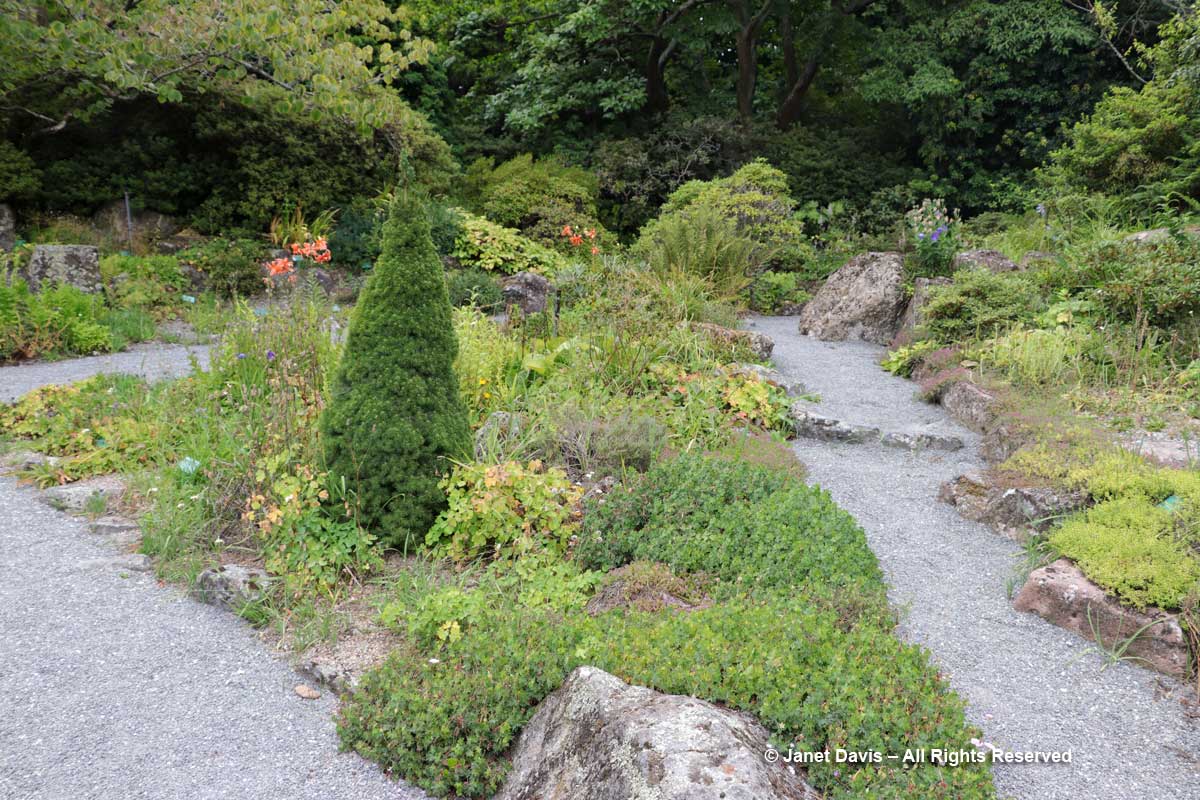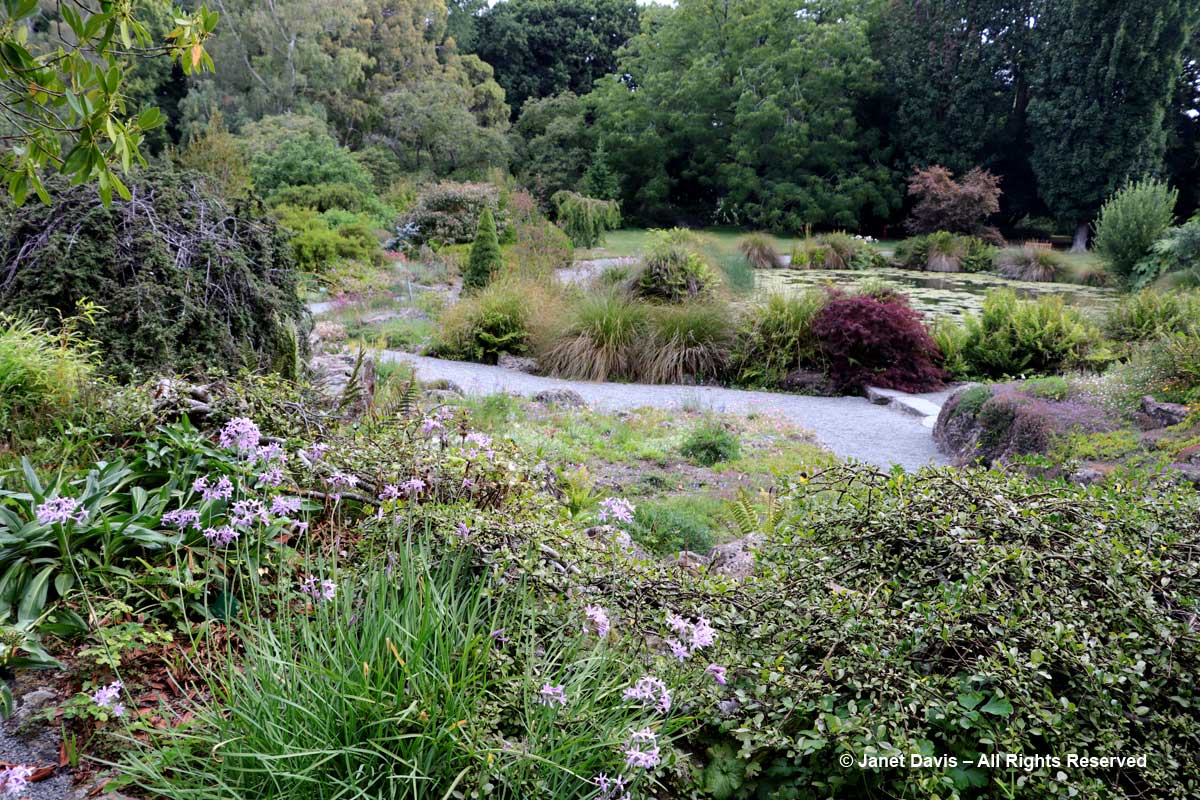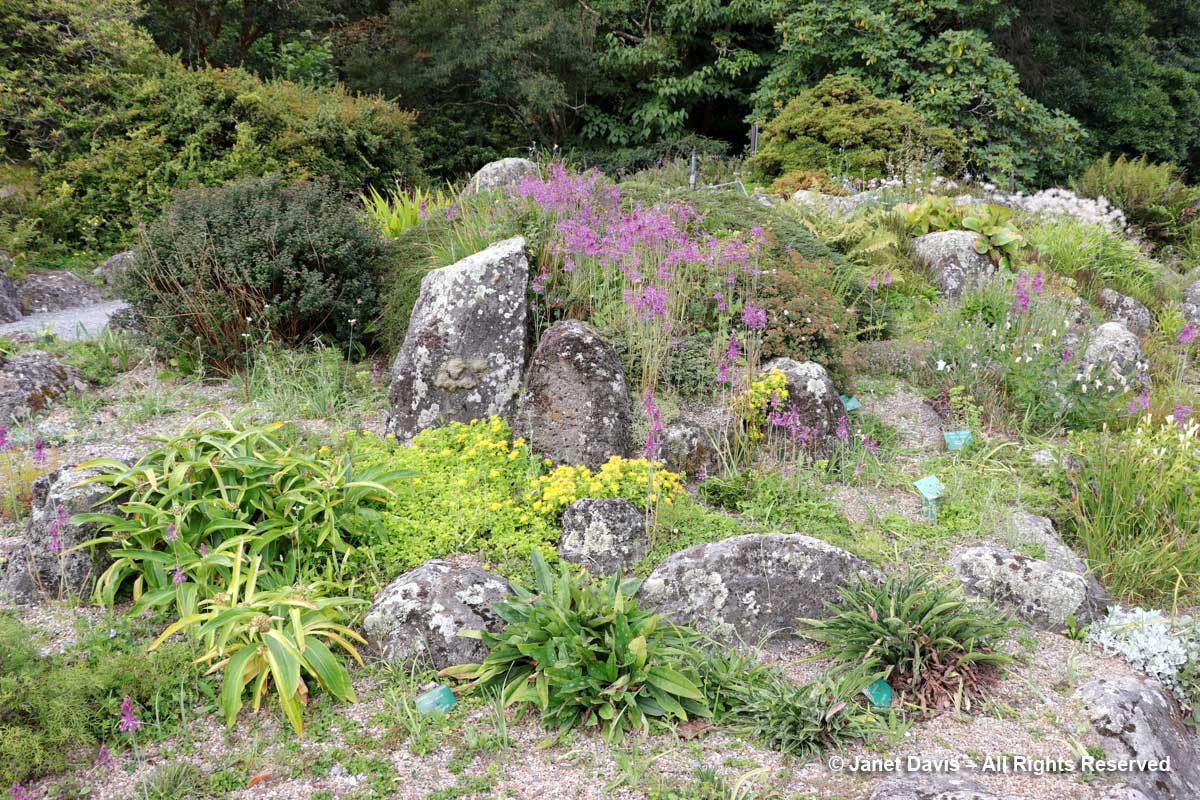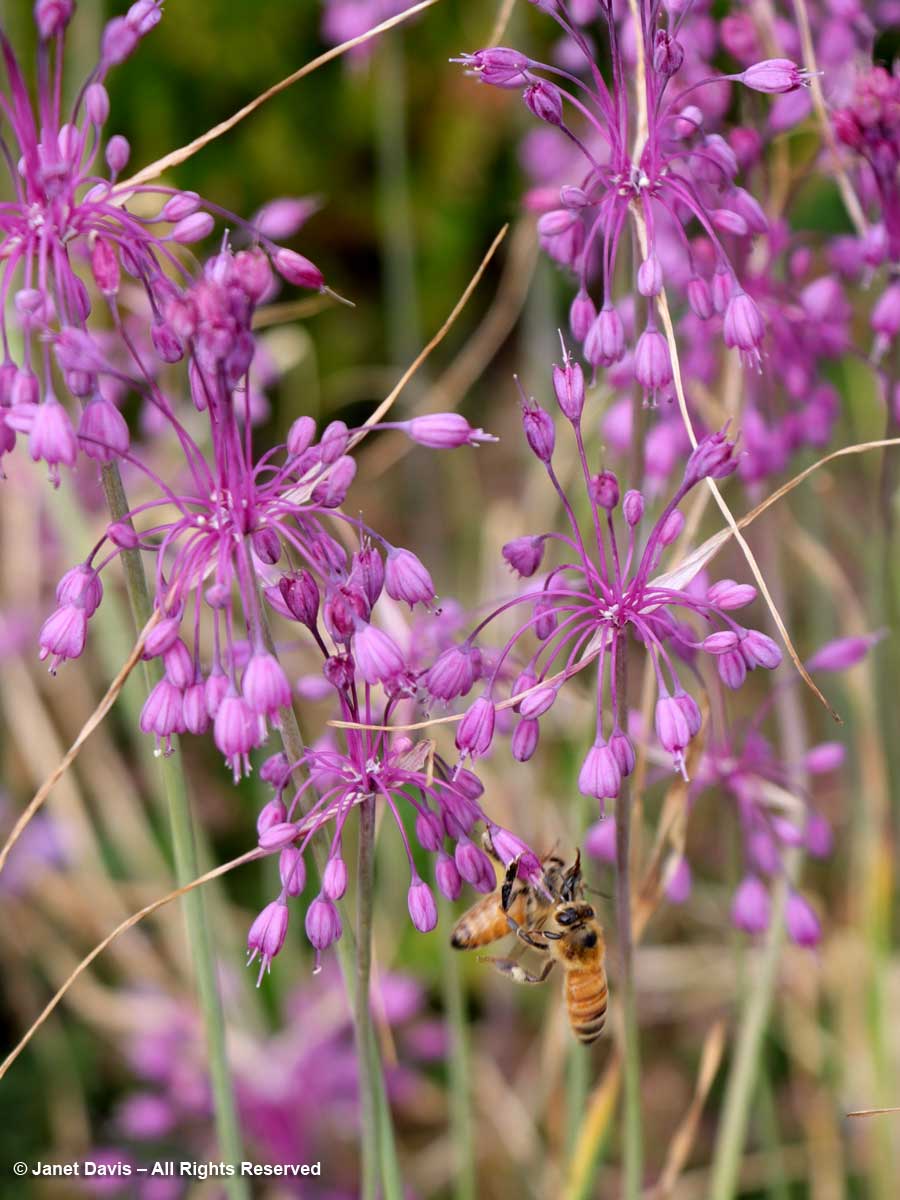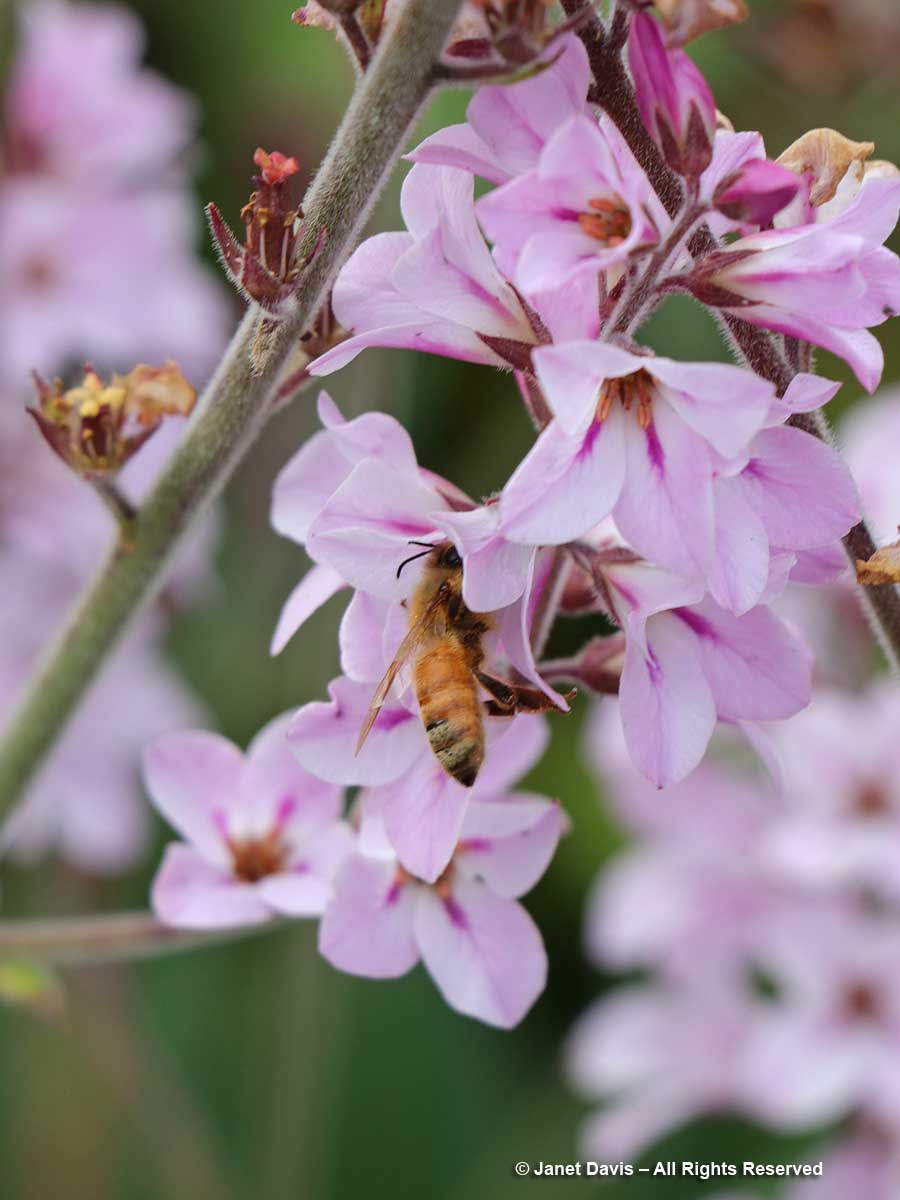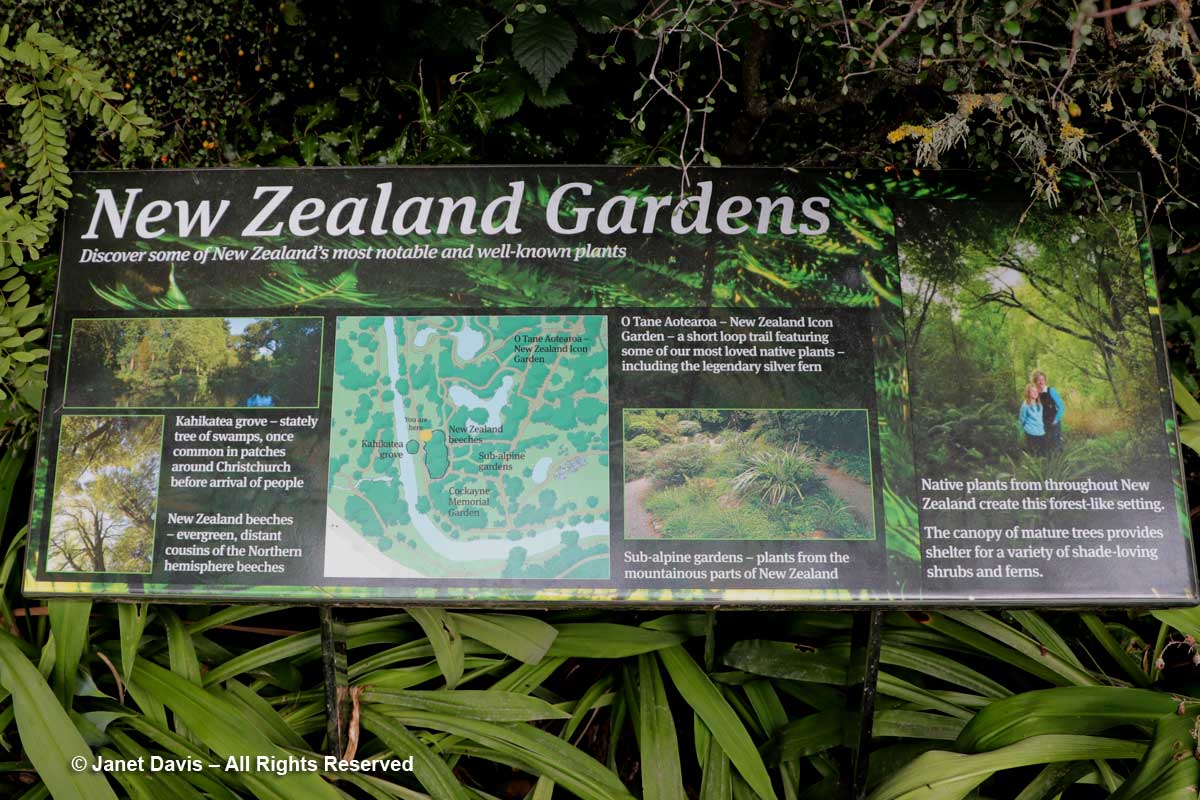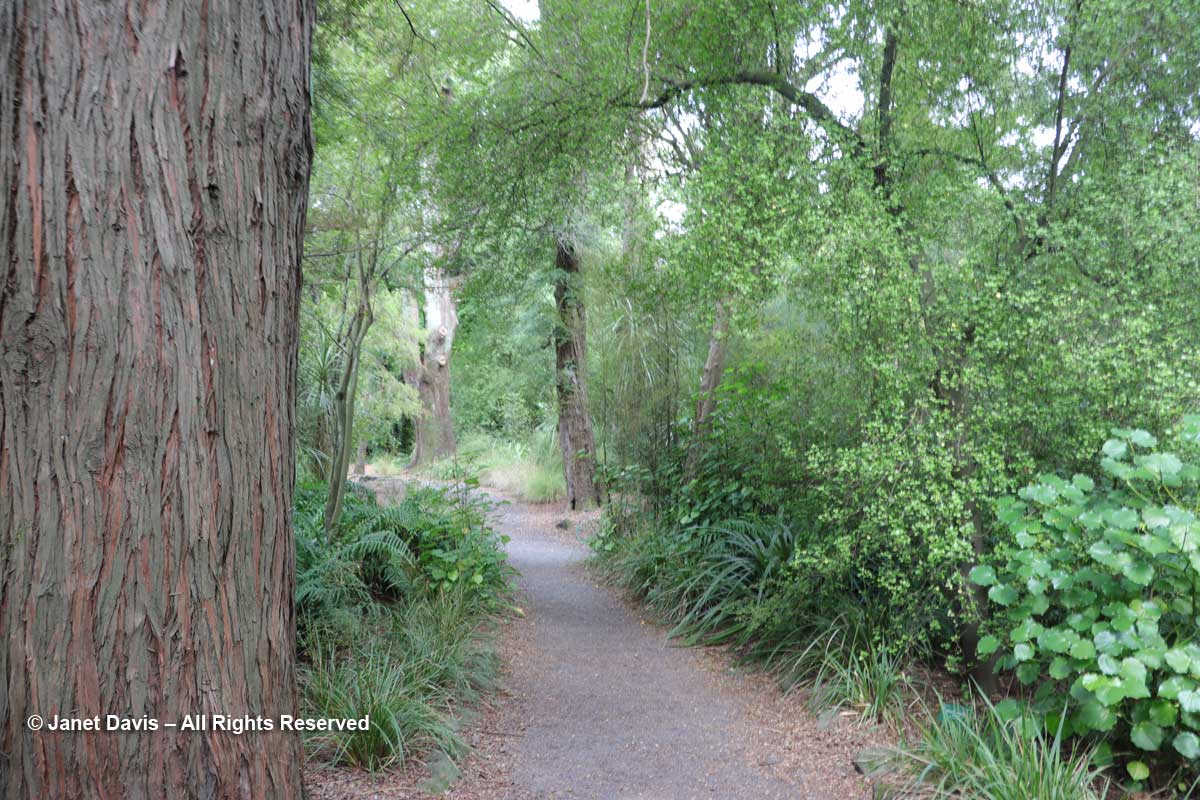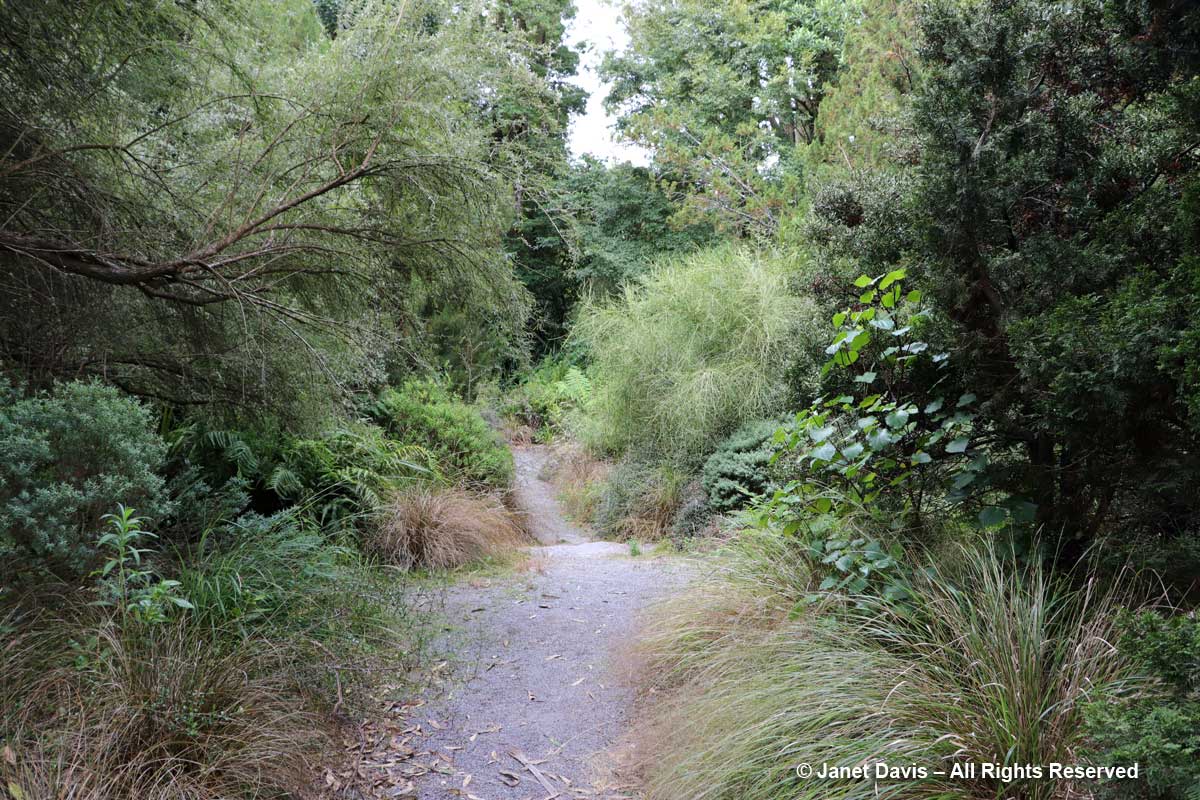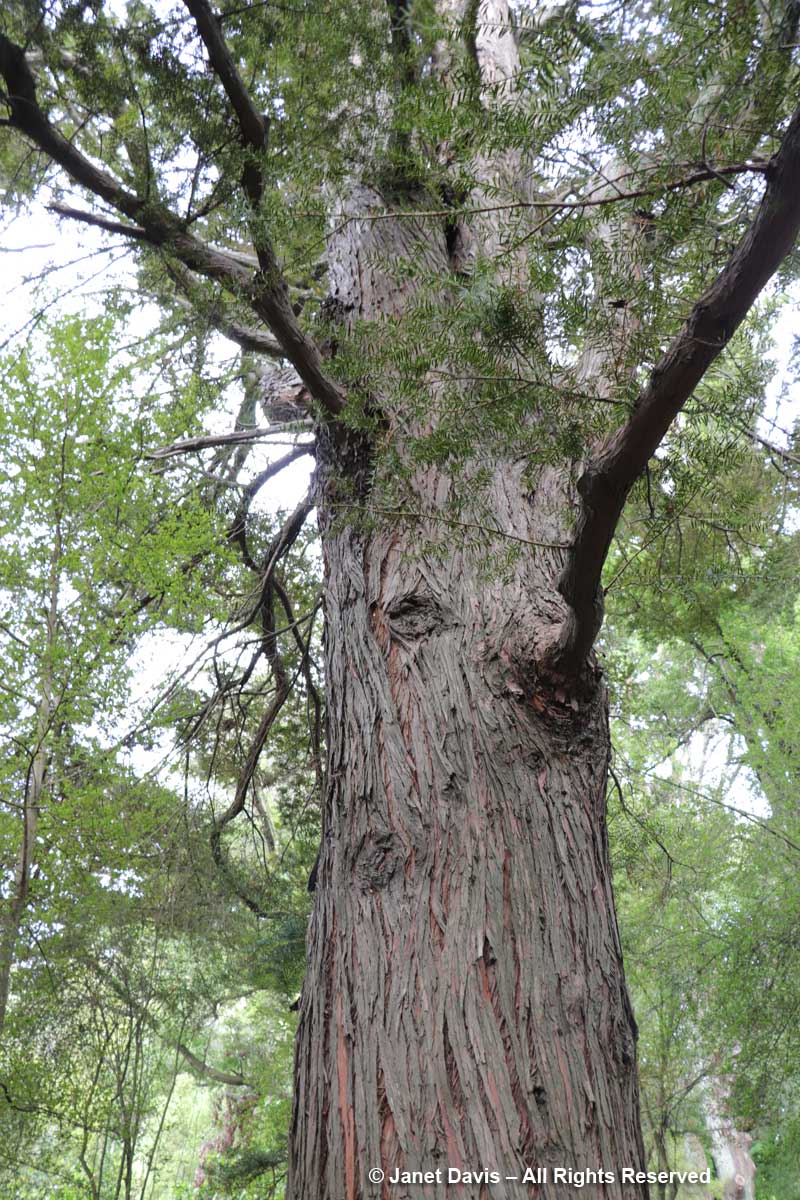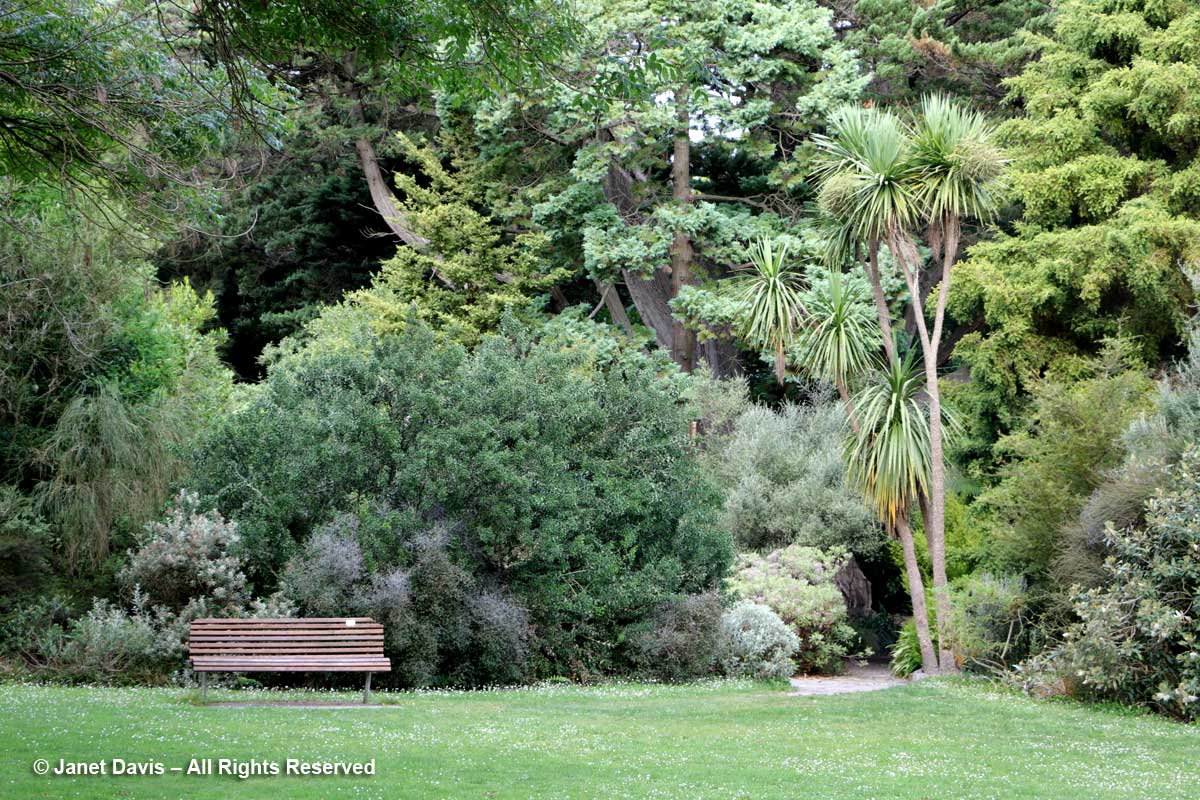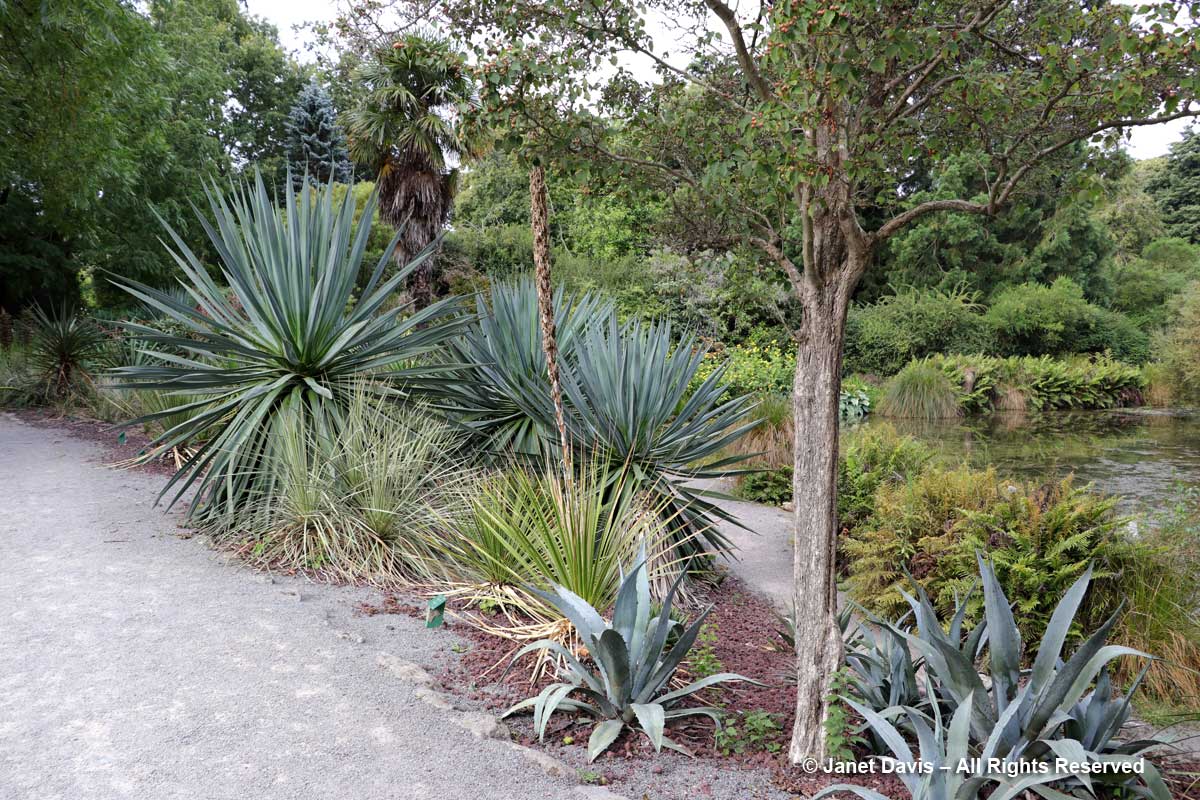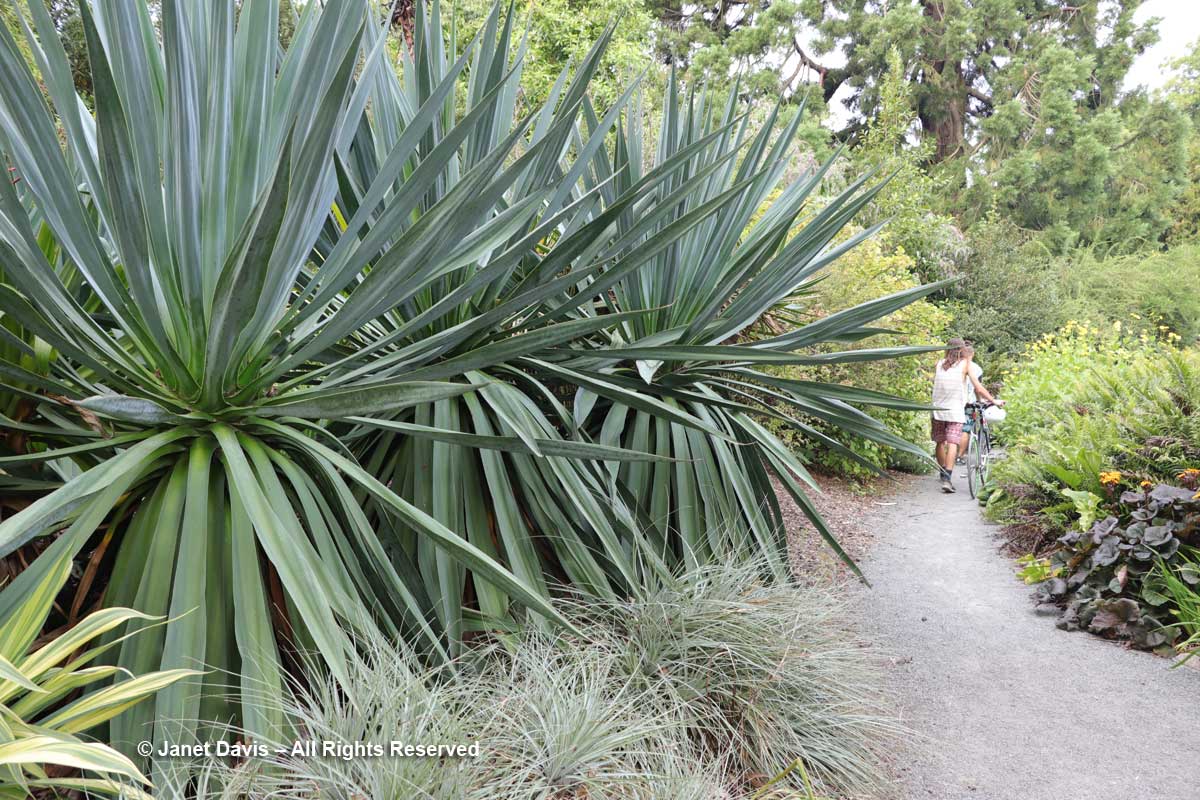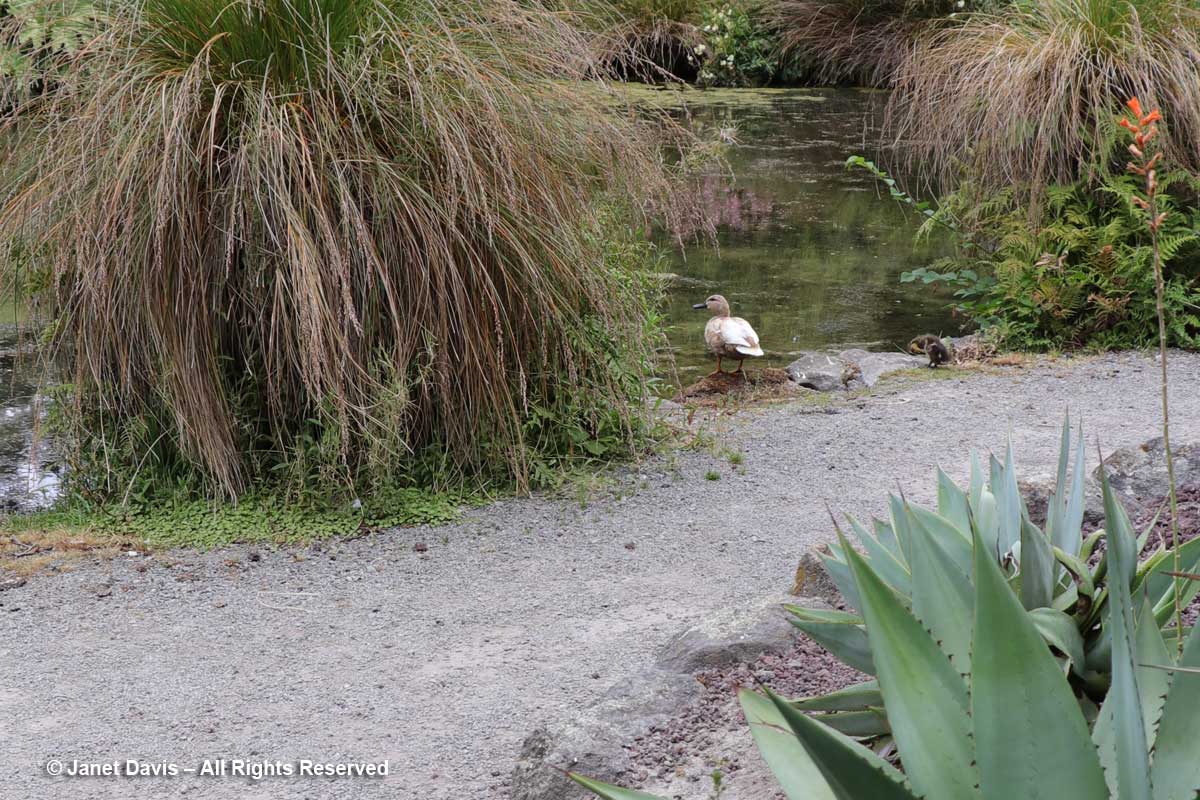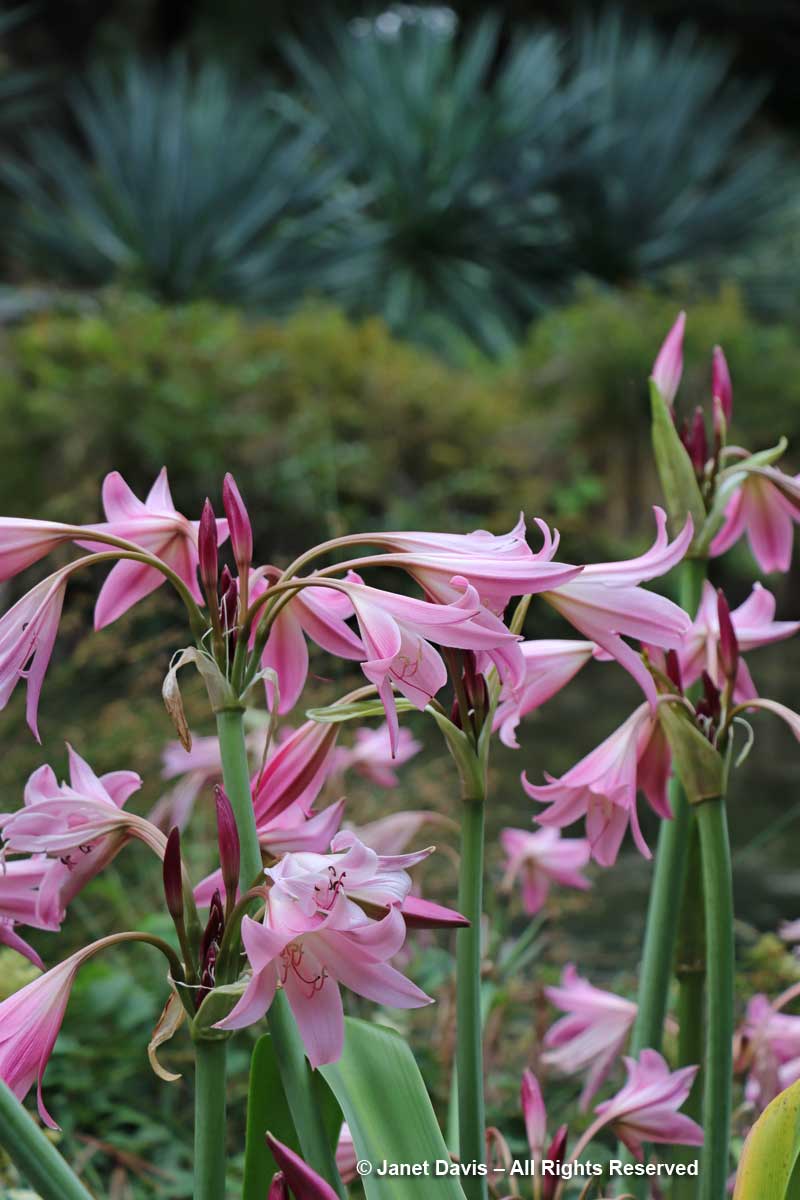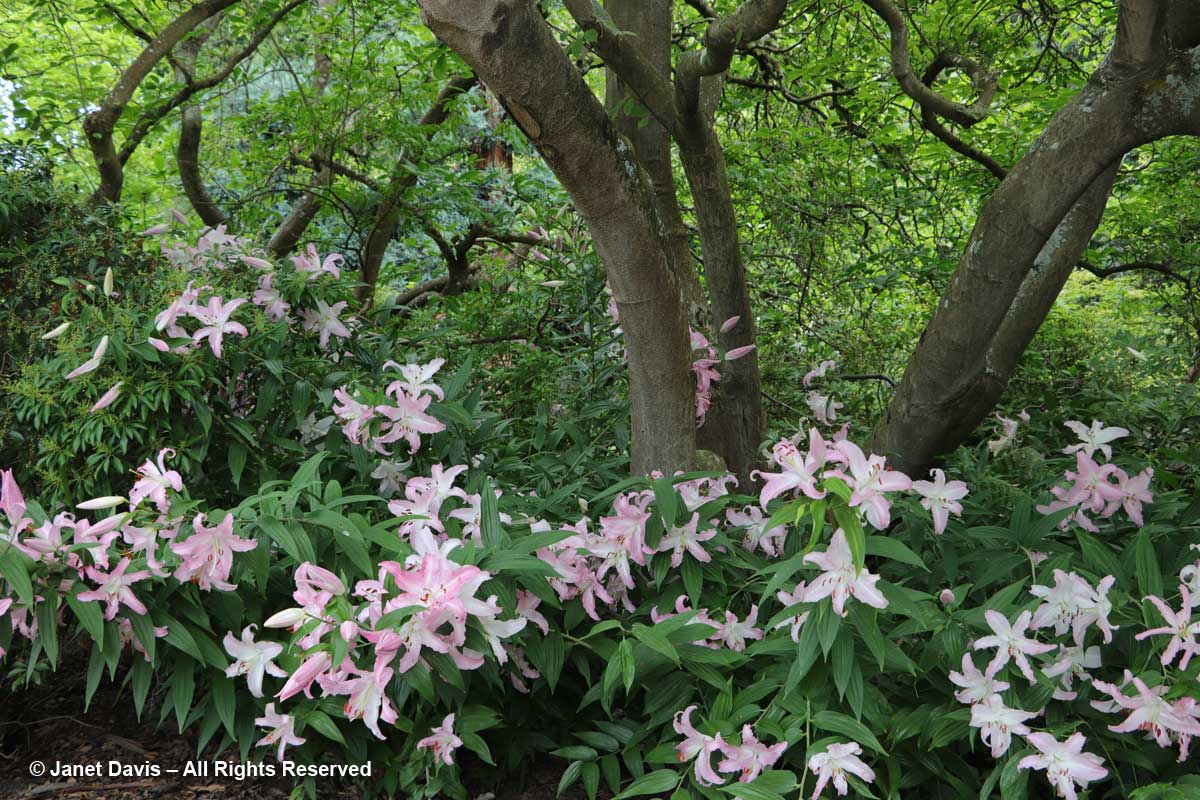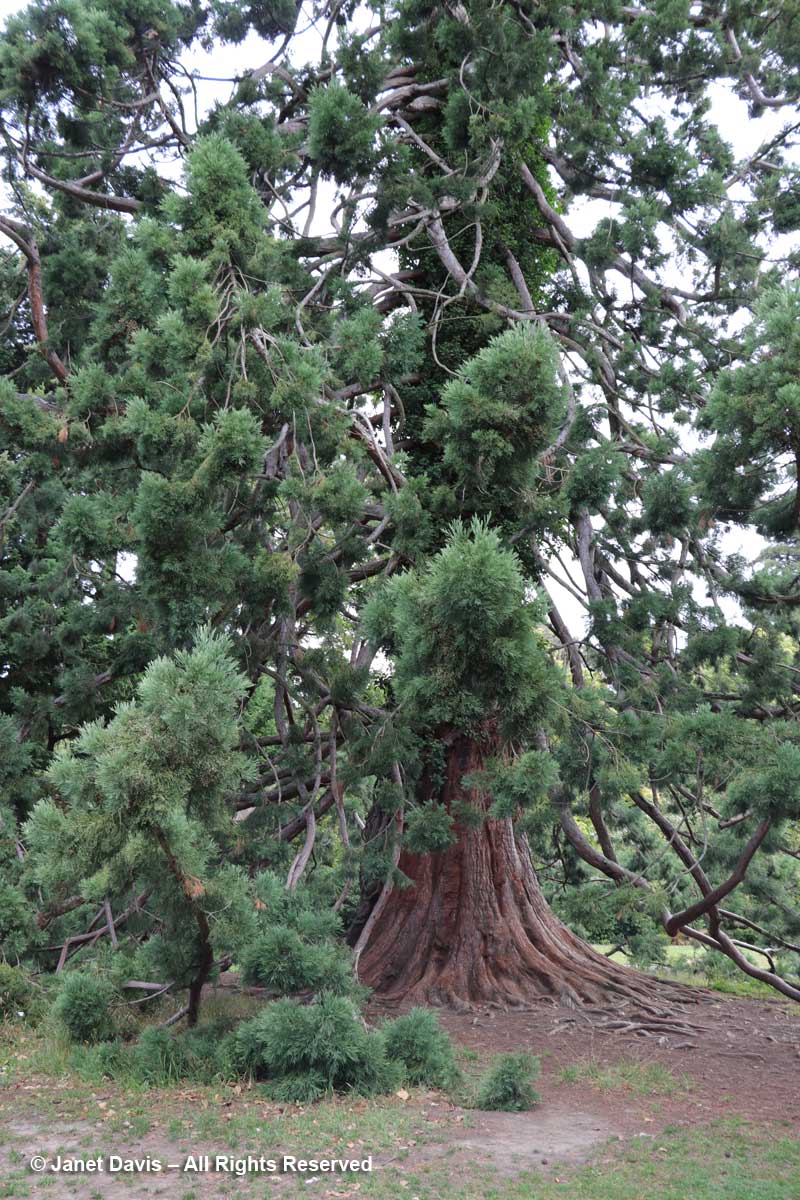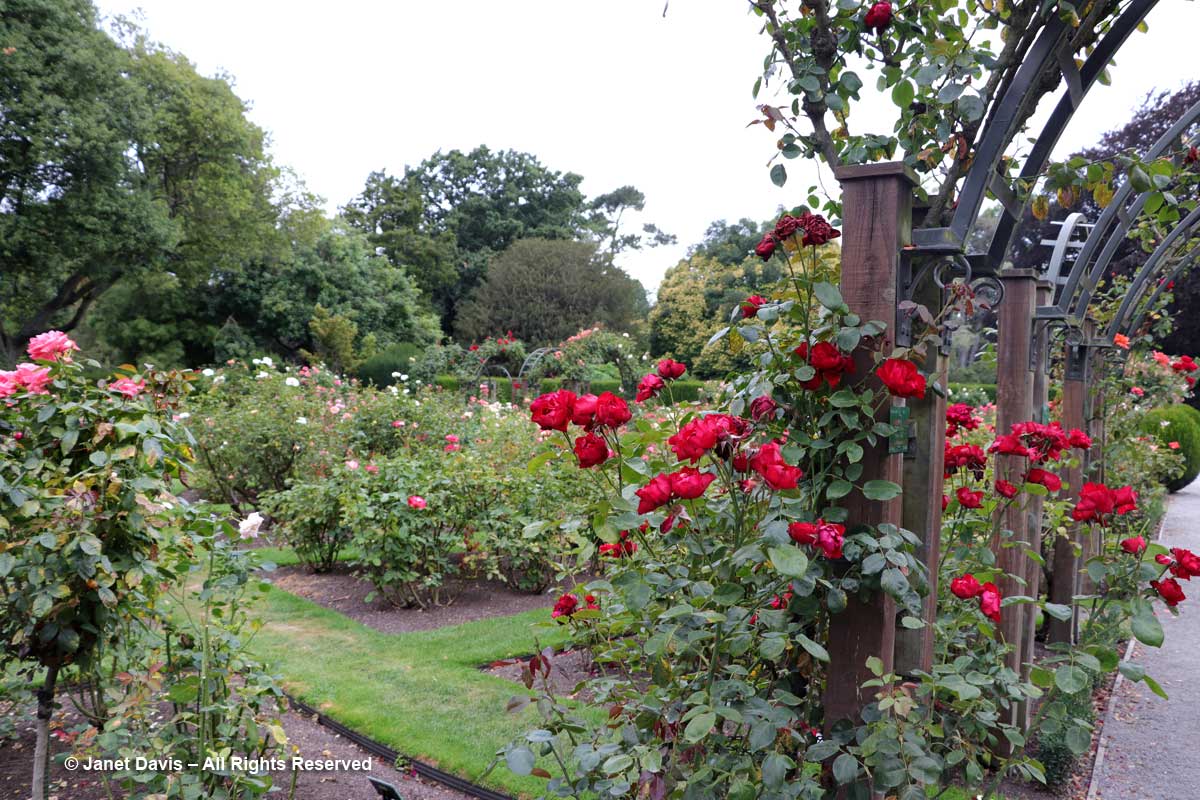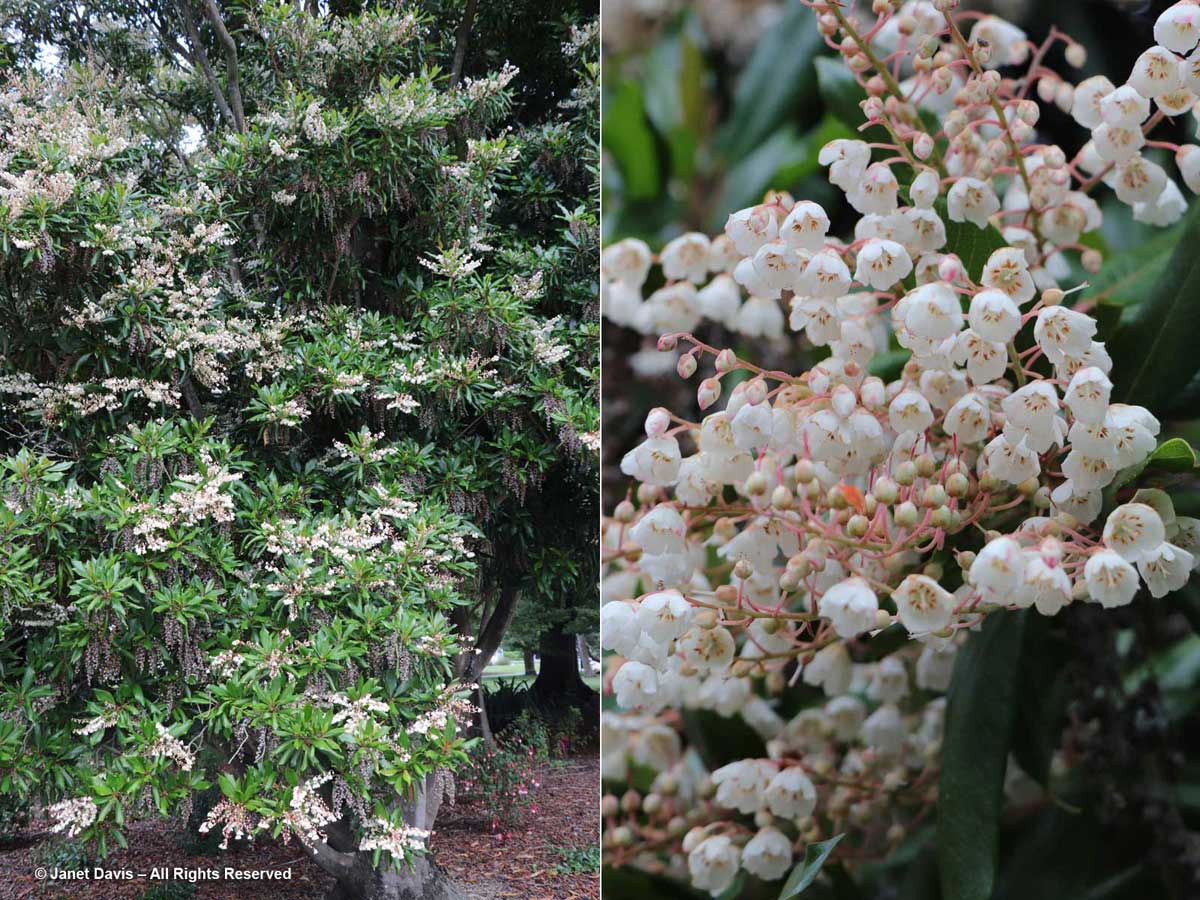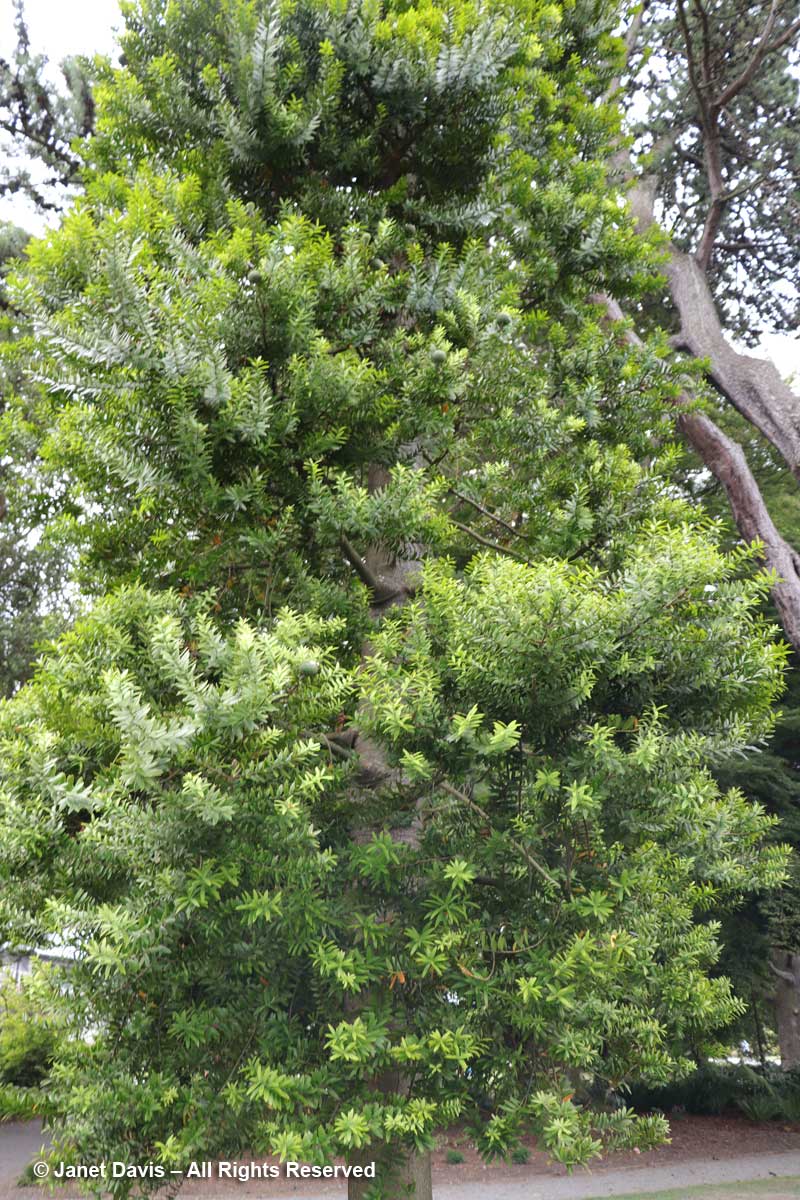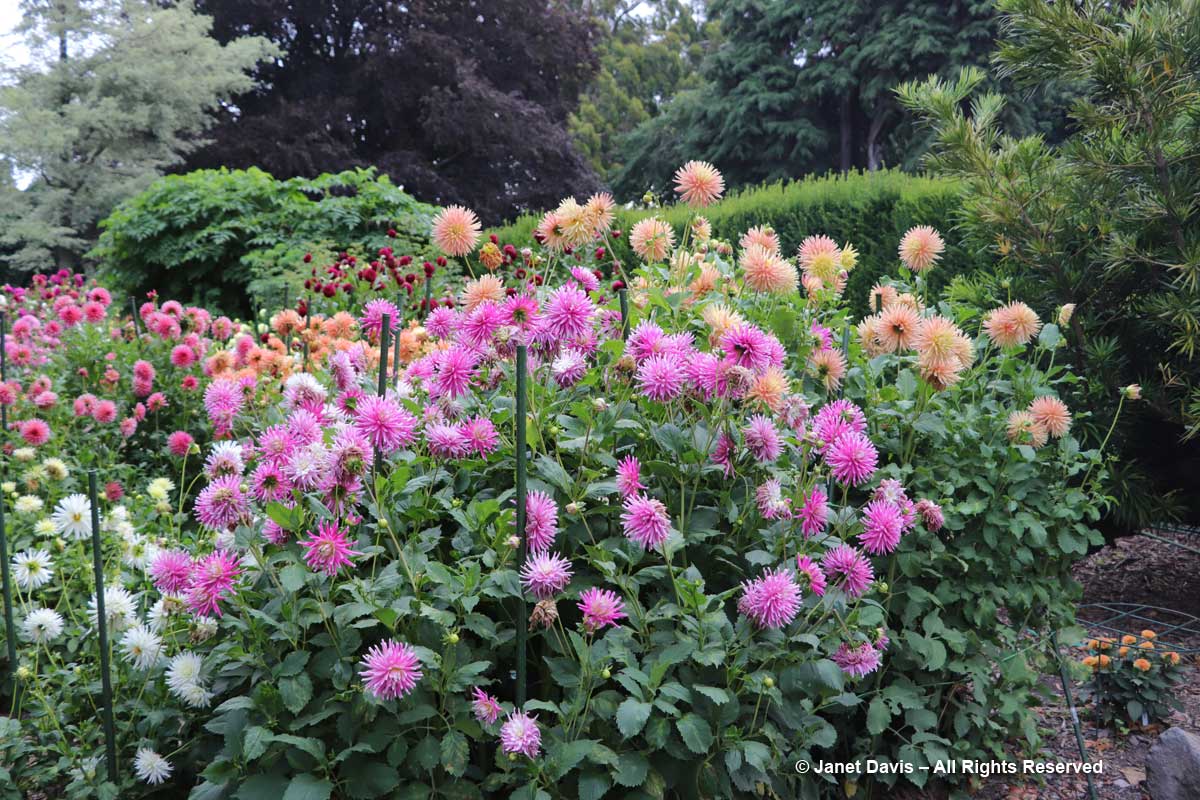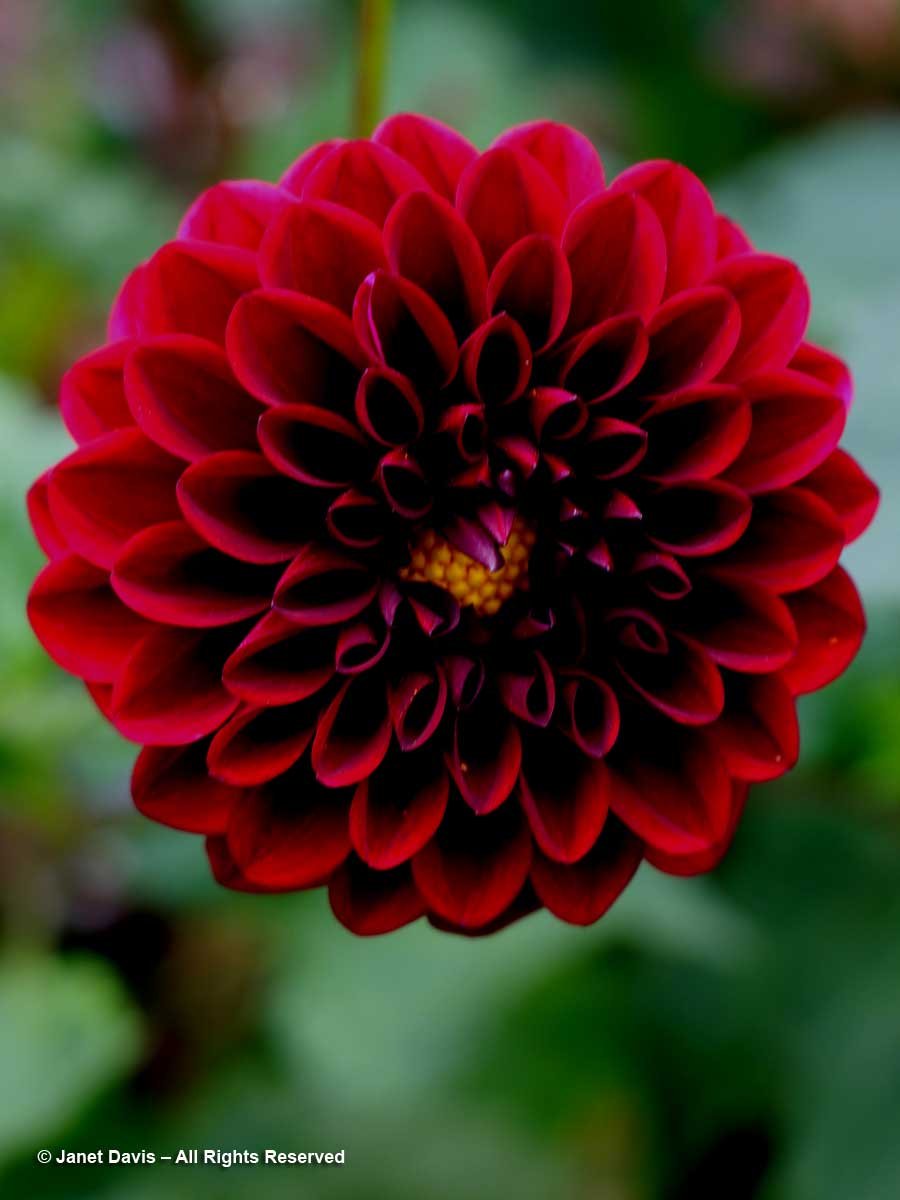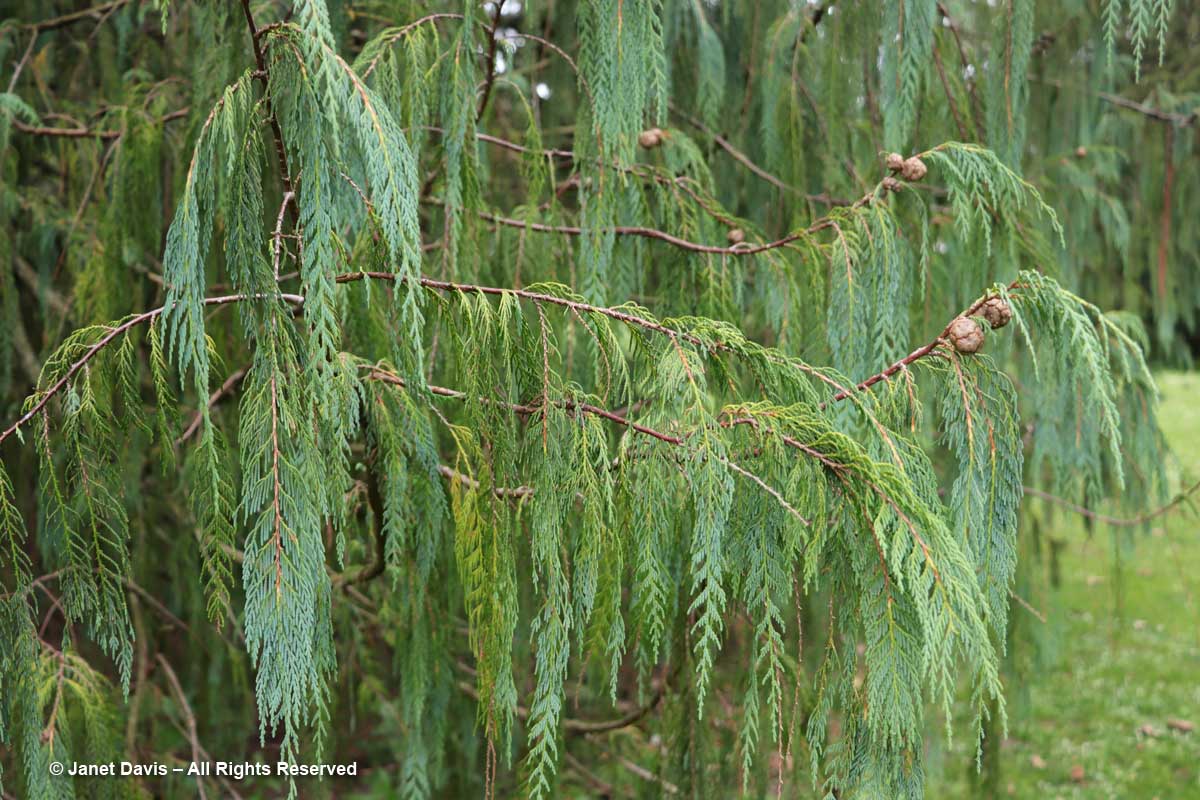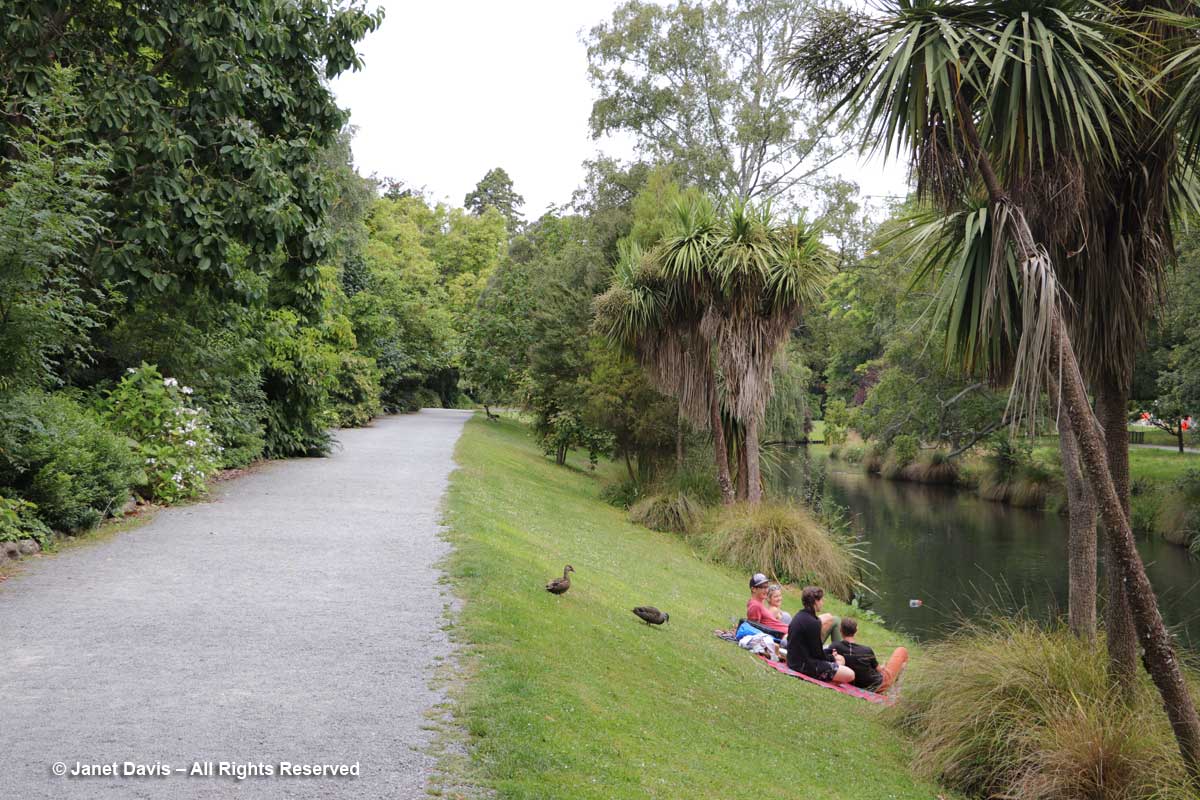As we pulled into Christchurch in late afternoon a few hours after our delightful lunch and garden tour at Akaunui Homestead and Farm, a few of us decided to leave the hotel and walk to the Christchurch Botanic Gardens less than a mile away. After the disastrous 2011 earthquake here, the city has been rebuilding for years, especially structures that were not earthquake-proof, like this old building en route.
The botanic gardens are open to the public from 7 am to 6:30 pm (conservatories 10:15 am – 4 pm) daily, except Christmas Day. Like all the botanic gardens we saw in New Zealand, there is no charge to visit. Covering 21 hectares (52 acres), they were opened in 1863, occupying a pretty site along the Avon River. There is an excellent printed .pdf guide online.
We started in the Kitchen Garden adjacent to the former Curator’s House, which is now a restaurant (we would eat dinner there later). I thought this was one of the finest edible gardens I’d visited…..
….with its focus on design…..
….and diversity of edibles…..
….and education.
We walked along the Avon River with its scrim of beech trees….
….past early evening picnickers.
With so little time until dark, we bypassed the lawn and adjacent heather garden.
The large Rock Garden seemed to need a little more TLC in the weeding and editing department……
….. but had clearly been an ambitious design with significant scale.
I liked seeing a new ornamental onion, Allium carinatum subsp. pulchellum, so happy here…..
…. and keeping the bees happy, too.
I had never seen Francoa sonchifolia in a garden, so was delighted to find it here along with its foraging honey bees…..
I walked slowly through the New Zealand Gardens….
….full of indigenous plants which in this country seem to be so understatedly…..
…. green that the overwhelming perception is unremarkable.
But it takes time and local understanding to appreciate each of these plants, the smallest and the large, like the iconic totara tree (Podocarpus totara), below….
….and how they relate to wildlife, including this insect chorus on a Christchurch evening in mid-summer. Listen…..
Adjacent to the Native Plant Garden is the Cocayne Memorial Garden, designed in 1938 to honour Leonard Cocayne (1855-1934), New Zealand’s pioneering botanist and ecologist and author of The Vegetation of New Zealand (1921).
Given our limited time, we hurried through a cactus garden….
….. with some interesting large succulents that I later discovered were Furcraea parmentieri. A monocarpic Mexican species, these plants will grow until they achieve flowering, after which they will die.
A female paradise shelduck hovered at the water’s edge with her duckling nearby.
There were pretty, South African Crinum x powellii at the water’s edge here, showing why its common name is “swamp lily”.
Time was fleeting so we turned back toward the entrance past this lovely stand of fragrant lilies.
Nearby was a giant redwood (Sequoidendron giganteum), below, one of seven grown from seed that was ordered from California in 1873 (just 21 years after William Lobb first collected seed of the newly discovered trees in Calaveras Grove in the Sierra Nevadas for Veitch’s Nursery in England), making them 145 years old. Interestingly, though North Americans call this species “Sierra redwood” or “giant redwood” or “big tree” (since it is often confused with the smaller Coast redwood, Sequoia sempervirens). New Zealanders and the British call it “Wellingtonia”, a name that recalls England’s race to be the first to name it. After Lobb returned to England with seed, seedlings and herbarium specimens, taxonomist John Lindley named the species Wellingtonia gigantea to honour the recently deceased Duke of Wellington (1769-1852). Meanwhile, as tourists poured into Calaveras Grove, botanist Albert Kellogg was working to sort out his big tree specimens in his herbarium at the brand-new California Academy of Natural Sciences in San Francisco, intending to call the species Washingtonia. In 1854, the Duke of Wellington would lose his “official” taxonomic honour when French botanist Joseph Decaisne placed the tree in the genus Sequoia as S. gigantea (Sequoiadendron came later), but the common name Wellingtonia stuck for giant redwoods grown in the Commonwealth.
We peeked in to the lovely Rose Garden with its 104 beds, but kept walking.
Two more trees caught my eye. The Madeiran lily-of-the-valley tree (Clethra arborea) was attracting bees to its pendant blossoms……
….. and I was happy to see a young kauri (Agathis australis) growing here, having loved walking under towering kauris in their protected forest at Bay of Islands.
At the southeast fringe of the Rose Garden was the extensive Dahlia Garden, with 90 percent of the collection sourced from New Zealand breeders.
This is ‘Velvet Night’, a 1985 introduction from Dr. Keith Hammett, one of the dahlia world’s icons and New Zealand’s leading breeder of ornamental plants.
We walked past an old Kashmir cypress (Cupressus cashmeriana), with its elegant pendulous branchlets.
Sadly because of the lateness of the day, we missed seeing the large water garden and the far reaches of Christchurch Botanic Gardens including Hagley Park. And the six conservatories had closed a few hours earlier: Cunningham House (tropical rainforest), Townend House (cool greenhouse), Garrick House (desert), Gilpin House (orchids, bromeliads, carnivorous plants), Fern House and Fowraker House (indigenous and exotic alpines). And somehow we missed the herbaceous border. But it was time to head back to the entrance, past our riverside picnickers who had now been joined by friends and a few waterfowl, in order to enjoy our own alfresco dinner at the Curator’s House Restaurant before walking back to the hotel and hitting the sack. For tomorrow would be one of the best days on our tour, starring three stunning and very different New Zealand gardens.

